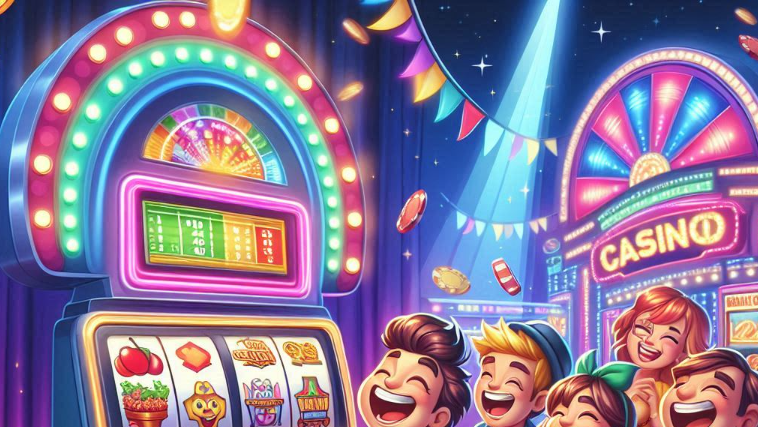
Judi bola online telah menjadi salah satu bentuk hiburan yang sangat populer di kalangan para penggemar sepak bola. Tidak hanya menawarkan kesempatan untuk merasakan ketegangan pertandingan secara langsung, tetapi juga memberikan peluang untuk menghasilkan uang. Namun, untuk bisa menang besar setiap hari di judi bola, dibutuhkan lebih dari sekedar keberuntungan. Dibutuhkan pemahaman yang mendalam, strategi yang tepat, serta disiplin dalam bertaruh. Artikel ini akan membahas beberapa tips yang dapat membantu Anda meningkatkan peluang menang besar dalam judi bola.
Memahami Dasar-dasar Taruhan Judi Bola
Sebelum mulai bertaruh, sangat penting untuk memahami dasar-dasar taruhan judi bola. Ada berbagai jenis taruhan yang dapat dipilih, seperti taruhan handicap, over/under, atau taruhan skor akhir. Setiap jenis taruhan memiliki aturan dan peluang yang berbeda. Memahami cara kerja setiap jenis taruhan akan memberikan Anda keuntungan dalam memilih taruhan yang paling menguntungkan.
Selain itu, penting juga untuk mengetahui bagaimana odd (peluang) bekerja. Odd menunjukkan peluang yang diberikan oleh situs judi untuk hasil tertentu, dan memahami bagaimana cara menghitung odd dapat membantu Anda membuat keputusan taruhan yang lebih cerdas.
Analisis Statistik Tim dan Pemain
Salah satu kunci untuk memenangkan taruhan judi bola adalah dengan melakukan analisis statistik yang baik. Sebelum bertaruh, lakukan riset tentang tim yang akan bertanding, termasuk performa mereka dalam pertandingan terakhir, rekor pertandingan kandang dan tandang, serta kondisi fisik pemain. Perhatikan juga statistik individu pemain, seperti jumlah gol yang dicetak, jumlah assist, serta catatan cedera yang mungkin mempengaruhi performa tim.
Dengan menganalisis faktor-faktor ini, Anda bisa mendapatkan gambaran yang lebih jelas tentang kemungkinan hasil pertandingan dan membuat keputusan sbobet88 login taruhan yang lebih terinformasi. Statistik yang kuat sering kali dapat memberikan gambaran lebih akurat tentang bagaimana pertandingan akan berlangsung.
Mengikuti Berita Terkini
Selain menganalisis statistik, mengikuti berita terkini tentang tim dan pemain sangat penting dalam judi bola. Berita terkini dapat mencakup informasi tentang cedera pemain, perubahan strategi tim, atau bahkan perubahan dalam manajemen tim. Berita semacam ini dapat mempengaruhi hasil pertandingan dan, pada akhirnya, mempengaruhi hasil taruhan Anda.
Misalnya, jika sebuah tim kehilangan pemain kunci karena cedera atau suspensi, hal ini dapat mempengaruhi performa mereka dalam pertandingan tersebut. Dengan mengikuti berita terkini, Anda dapat membuat keputusan yang lebih cerdas dan menghindari taruhan yang berisiko tinggi.
Jangan Terbawa Emosi
Salah satu tantangan terbesar dalam judi bola adalah mengendalikan emosi. Banyak pemain yang tergoda untuk bertaruh lebih banyak setelah menang, atau bahkan mengejar kerugian setelah kalah. Hal ini bisa berisiko dan berpotensi menyebabkan kerugian besar. Oleh karena itu, sangat penting untuk tetap tenang dan tidak terbawa emosi saat bertaruh.
Tentukan batas taruhan yang sesuai dengan anggaran Anda dan tetap patuhi batas tersebut. Jika Anda merasa emosi mulai menguasai Anda, lebih baik berhenti sejenak dan melanjutkan taruhan setelah merasa lebih tenang. Bermain dengan kepala dingin akan membantu Anda membuat keputusan yang lebih rasional.
Fokus pada Kompetisi dan Laga Terbesar
Meskipun judi bola menawarkan banyak pertandingan setiap hari, tidak semua pertandingan memiliki peluang yang sama besar untuk menghasilkan keuntungan. Fokuskan taruhan Anda pada pertandingan-pertandingan besar atau pertandingan yang memiliki statistik dan informasi yang lebih banyak. Laga-laga dengan tim-tim besar biasanya lebih mudah dianalisis, karena Anda sudah memiliki banyak data dan riwayat pertandingan yang tersedia.
Selain itu, hindari bertaruh pada pertandingan yang Anda tidak yakin akan hasilnya atau pertandingan yang terjadi di liga yang kurang dikenal. Fokus pada laga dengan tim-tim yang memiliki performa konsisten dan berita terkini yang cukup banyak.
Gunakan Strategi Taruhan yang Tepat
Terdapat berbagai strategi taruhan yang dapat digunakan dalam judi bola. Salah satunya adalah strategi taruhan bertahap atau taruhan progresif, di mana Anda secara bertahap meningkatkan taruhan setelah setiap kemenangan. Namun, Anda harus berhati-hati dalam menggunakan strategi ini, karena jika Anda terlalu sering kalah, Anda bisa kehilangan jumlah uang yang besar.
Selain itu, ada juga strategi taruhan nilai (value betting), di mana Anda mencari peluang di mana odd yang ditawarkan oleh situs judi tidak sesuai dengan kemungkinan hasil yang sebenarnya. Dengan menemukan taruhan dengan nilai yang lebih tinggi, Anda dapat meningkatkan peluang keuntungan dalam jangka panjang.
Manajemen Modal yang Bijak
Manajemen modal adalah hal yang sangat penting dalam judi bola. Tidak peduli seberapa baik strategi yang Anda gunakan, jika Anda tidak mengelola modal Anda dengan bijak, kemenangan besar akan sulit tercapai. Tentukan anggaran yang dapat Anda pertaruhkan, dan pastikan untuk tidak melebihi batas tersebut.
Jangan bertaruh seluruh modal Anda dalam satu pertandingan. Sebaliknya, bagi modal Anda dalam beberapa taruhan yang lebih kecil dan pastikan untuk mengatur batas kerugian harian. Jika Anda mencapai batas tersebut, berhentilah dan lanjutkan permainan di lain waktu. Dengan manajemen modal yang baik, Anda akan mampu bertahan lebih lama dan meningkatkan peluang untuk menang.
Hindari Bertaruh Terlalu Banyak dalam Satu Hari
Meskipun godaan untuk bertaruh di banyak pertandingan setiap hari sangat besar, penting untuk tidak terburu-buru. Terlalu banyak taruhan dalam satu hari bisa mengurangi fokus Anda dan meningkatkan risiko kerugian. Pilih dengan cermat pertandingan yang ingin Anda pertaruhkan, dan jangan terbawa oleh keinginan untuk bertaruh hanya karena ada banyak pertandingan.
Bermain dengan disiplin dan memilih taruhan yang benar-benar Anda yakini akan meningkatkan peluang Anda untuk menang lebih banyak dalam jangka panjang.
Dengan mengikuti tips-tips di atas, Anda dapat meningkatkan peluang untuk menang besar dalam judi bola setiap hari. Ingat, kemenangan dalam judi bola bukan hanya tentang keberuntungan, tetapi juga tentang strategi, riset, dan pengelolaan modal yang bijak. Bermain dengan disiplin dan tetap tenang akan membantu Anda meraih kemenangan yang lebih sering.


















